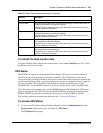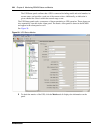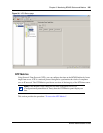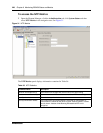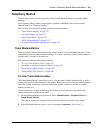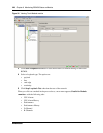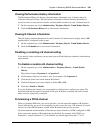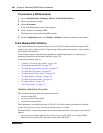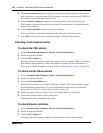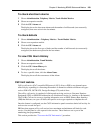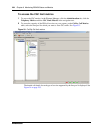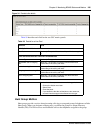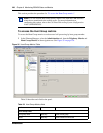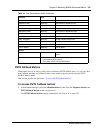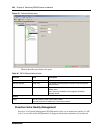
Chapter 9 Monitoring BCM50 Status and Metrics 231
BCM50 Administration Guide
• the number of bipolar violations that occurred in the last minute
• any defects that occurred in the last minute, such as loss of signal (LOS), out of frame (OOF),
and alarm indication signal (AIS)
• the number of milliseconds of short-term alarms in the last minute, such as loss of signal
(LOS), out of frame (OOF), alarm indication signal (AIS), and remote alarm indication (RAI).
A short term alarm is declared when the detected defects persist for tens of milliseconds.
A carrier failure alarm (CFA) is a duration of carrier system outage. CFA types reported can be
mapped to CFAs defined in TIA-547A and TR62411 as shown in Table 57.
The criteria for declaring and clearing the alarms is selectable to meet those in TIA-547A or
TR64211. You can also view Carrier Failure Alarms as Core Telephony Alarms in the Alarm
Viewer.
Enabling the internal CSU
Use the following procedure to enable the internal CSU to gather performance statistics for your
T1 lines or PRI with public interface.
To enable the internal CSU
1 Choose Configuration, Resources, Telephony Resources.
The window displays the expansion modules.
2 Choose the appropriate expansion module. For example, select Expansion 1.
3 For the selected module, choose the Trunk Module Parameters tab.
4 In the T1 Parameters section, select the Internal CSU check box to enable the Internal CSU.
To check the performance statistics
1 Choose Administration, Telephony Metrics, Trunk Module Metrics.
2 Choose the appropriate expansion module that contains the module that you want to check.
3 Choose Performance tab.
Table 57 Carrier failure alarms
Business Communications
Manager TIA-547A TR62411
LOS CFA RED CFA RED CFA
OOF CFA RED CFA RED CFA
AIS CFA RED CFA AIS CFA
RAI CFA YELLOW CFA YELLOW CFA



